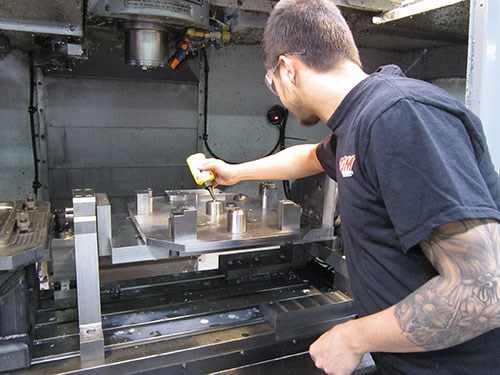Got Glue (And UV Light)?
Here’s an effective albeit atypical way to fixture parts such as thin-wall castings that are prone to flexing when conventional mechanical clamps are used.
Share







Sometimes shops have to get pretty creative when trying to figure out how best to fixture a part for machining. , in Rochester, New York, leverages an atypical technology to fixture parts such as thin-wall castings that are prone to flexing when conventional mechanical clamps are used.
In short, this technology, available from , uses adhesive to temporarily bond a workpiece to numerous cylindrical grippers installed in a fixture plate. Once the adhesive is cured via ultraviolet (UV) light, the workpiece is securely held at a known datum location in an undistorted, free-state condition. After machining, the adhesive bonds between the grippers and workpiece are easily broken and any excess adhesive is removed from the completed part via a quick, steam-cleaning wash.
Read this story to learn how PGM is using this technology to its advantage.
Related Content
-
Prioritizing Workholding Density Versus Simplicity
Determining whether to use high-density fixtures or to simplify workholding requires a deeper look into the details of your parts and processes.
-
Lean Approach to Automated Machine Tending Delivers Quicker Paths to Success
Almost any shop can automate at least some of its production, even in low-volume, high-mix applications. The key to getting started is finding the simplest solutions that fit your requirements. It helps to work with an automation partner that understands your needs.
-
Fixtureworks Pneumatic Clamp Fasteners Reduce Setup Time
The product lineup includes ball-lock pneumatic fasteners, ID holding, pin holding single- and double-acting pneumatic clamping fasteners.












